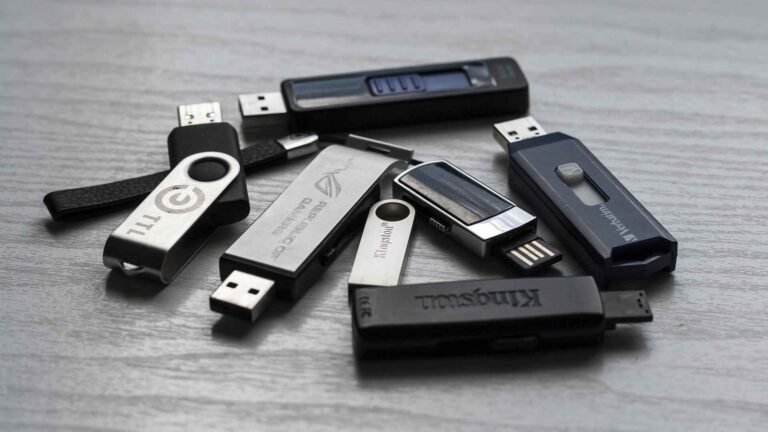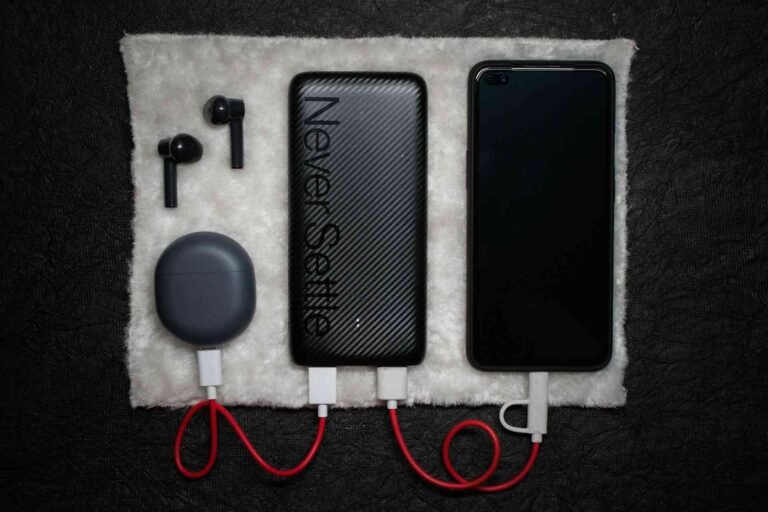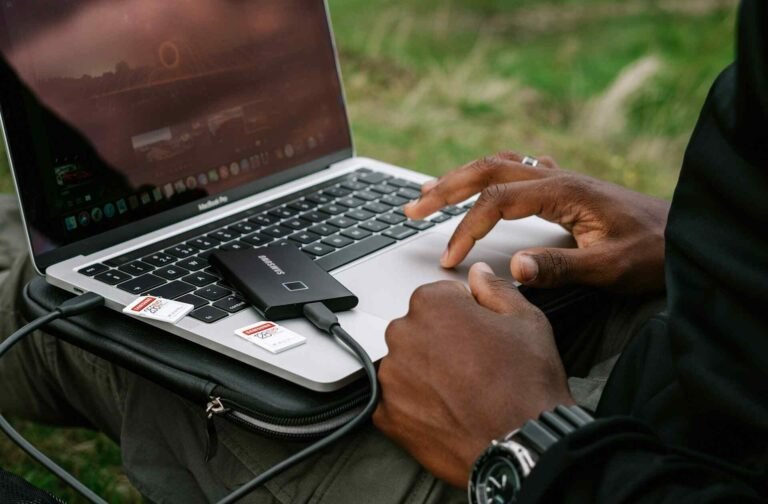Mini DisplayPort vs Thunderbolt: Which Connection Standard Wins in 2025?
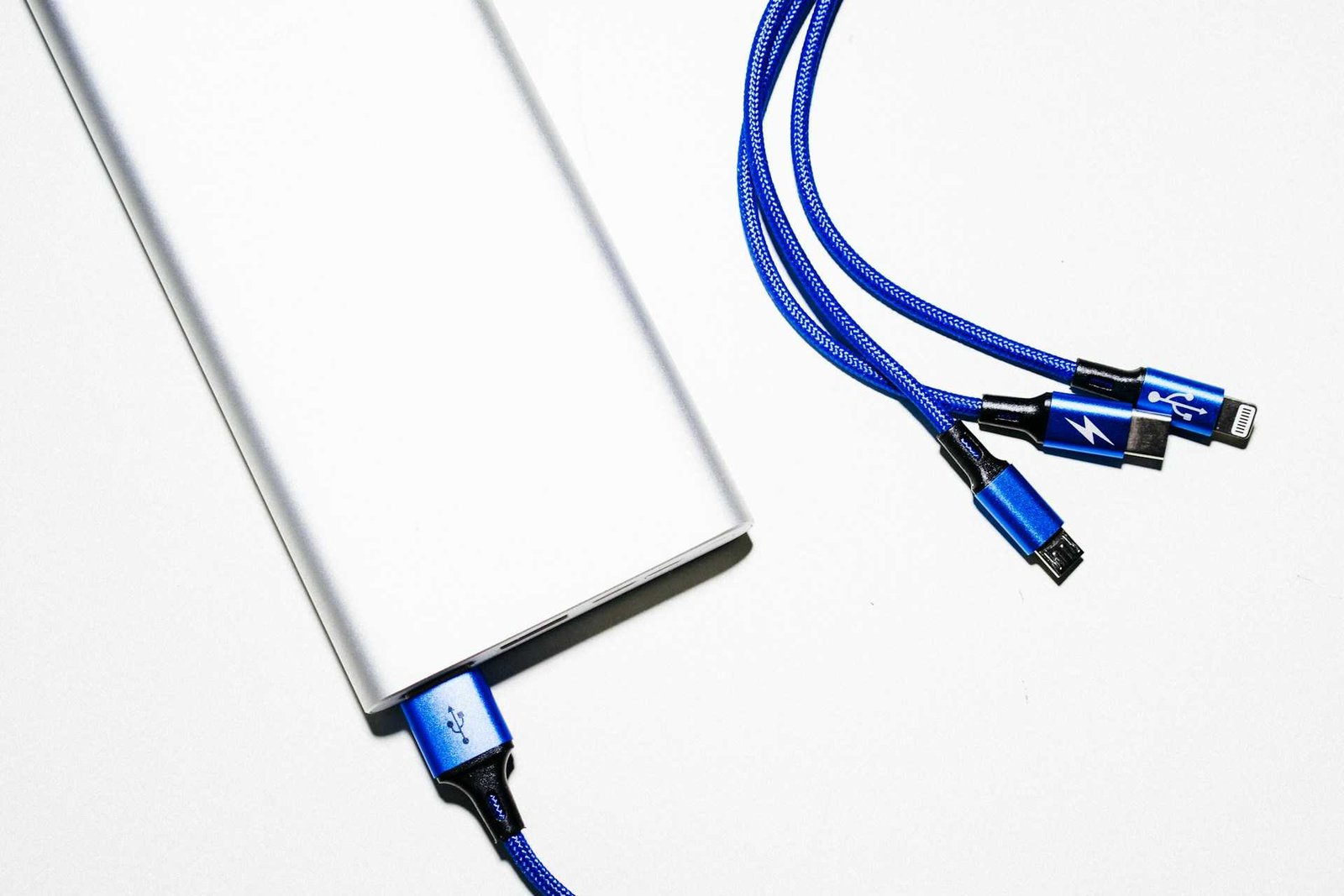
Ever stared at the back of your laptop and wondered if that tiny port is a Mini DisplayPort or Thunderbolt? These two connectors look almost identical, and frankly, it’s like trying to tell identical twins apart at first glance. But here’s the thing: knowing the difference between DisplayPort and Thunderbolt can save you from buying the wrong cable, missing out on faster data speeds, or even damaging your precious devices.
We’re about to clear up this confusion once and for all. Whether you’re setting up a home office, connecting multiple monitors, or just trying to figure out why your external display isn’t working, this guide will help you understand everything about these two connection standards.
What Exactly Are Mini DisplayPort and Thunderbolt?
Before we dive into the nitty-gritty comparison, let’s get our bearings straight. Think of these as two different languages that your devices use to communicate, except they happen to share the same physical appearance in many cases.
Mini DisplayPort: The Display Specialist
Mini DisplayPort is essentially the compact version of the standard DisplayPort connector. It was developed by Apple back in 2008 and later adopted by VESA (Video Electronics Standards Association) as an official standard. This little connector is all about one thing: delivering high-quality video and audio signals from your device to external displays.
The beauty of Mini DisplayPort lies in its simplicity. It’s designed specifically for display purposes, supporting resolutions up to 4K and beyond, depending on the version. Many older MacBooks, some Windows laptops, and various tablets feature this connector. It’s reliable, straightforward, and gets the job done without any fuss.
Thunderbolt: The Multitasking Marvel
Now, Thunderbolt is where things get interesting. Developed jointly by Intel and Apple, Thunderbolt is like the Swiss Army knife of connection standards. While it can handle everything Mini DisplayPort can do, it goes several steps further by supporting data transfer, power delivery, and even daisy-chaining multiple devices.
Think of Thunderbolt as Mini DisplayPort’s overachieving cousin. It uses the same physical connector as Mini DisplayPort in its earlier versions (Thunderbolt 1 and 2), but packs significantly more functionality under the hood. When Thunderbolt 3 and 4 came along, they switched to USB-C connectors, but that’s a story for another day.
The Key Differences That Actually Matter
Speed and Performance
Here’s where the rubber meets the road. While both connectors can handle high-resolution displays beautifully, their data transfer capabilities tell a very different story.
Mini DisplayPort focuses solely on video and audio transmission. It’s excellent at this job, supporting multiple 4K displays and delivering crisp, clear images. However, it’s a one-trick pony, it doesn’t transfer data files or charge devices.
Thunderbolt, on the other hand, is like having a superhighway for data. Thunderbolt 1 offers speeds up to 10 Gbps, Thunderbolt 2 bumps that up to 20 Gbps, and Thunderbolt 3 and 4 can reach a whopping 40 Gbps. This means you can transfer large files, connect external storage devices, and even run external graphics cards through a single cable.
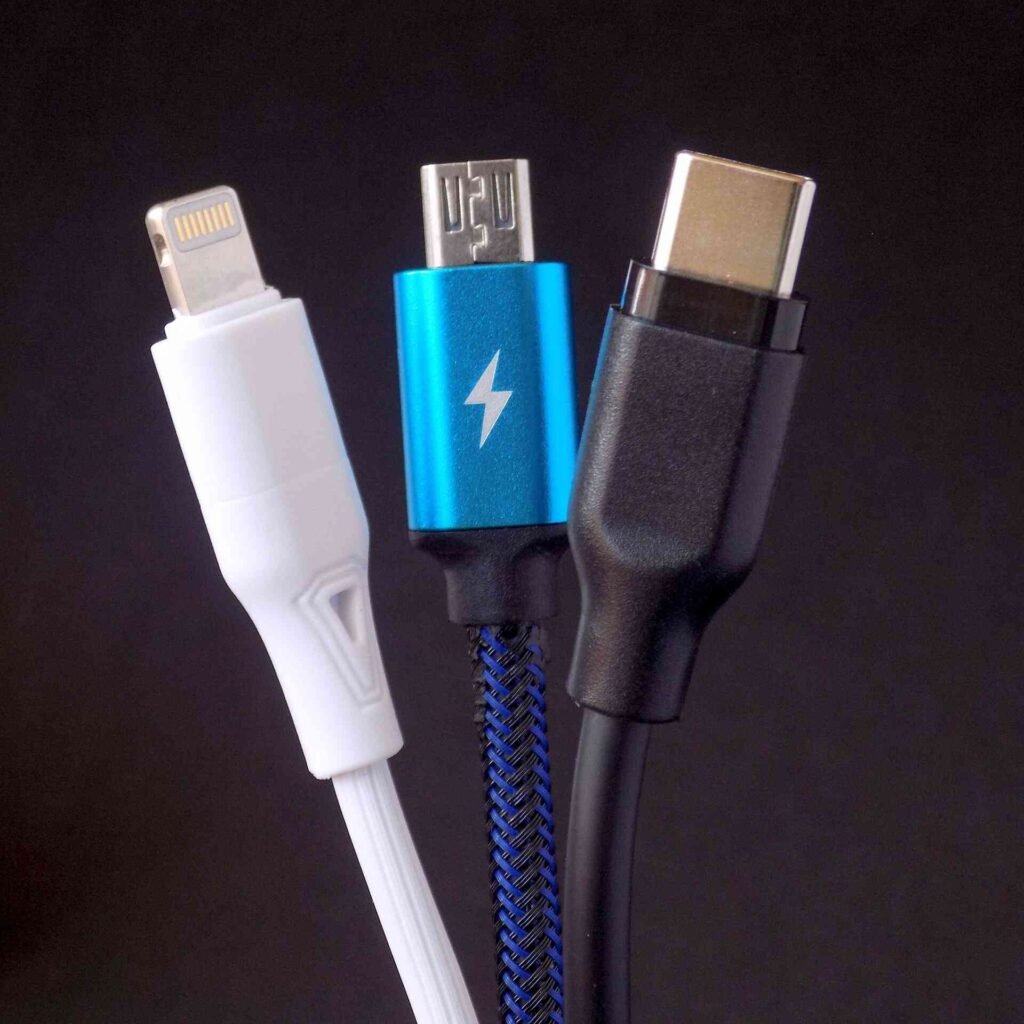
Power Delivery Capabilities
One of the most practical differences lies in power delivery. Mini DisplayPort doesn’t provide power to connected devices, it’s purely a signal carrier. If you’re connecting an external monitor, that monitor will need its own power source.
Thunderbolt ports can deliver power to connected devices, which is incredibly convenient. Depending on the version and implementation, Thunderbolt can provide anywhere from 10W to 100W of power. This means you could potentially charge your laptop while simultaneously transferring data and driving an external display.
Device Compatibility and Ecosystem
USB connectivity plays a crucial role in understanding these standards. Mini DisplayPort is primarily found on older devices, particularly Apple products from the late 2000s to mid-2010s. Many Windows laptops and some desktop graphics cards also feature Mini DisplayPort connections.
Thunderbolt has a more complex compatibility story. Early Thunderbolt ports (versions 1 and 2) are backward compatible with Mini DisplayPort, meaning you can plug a Mini DisplayPort cable into a Thunderbolt port and it will work for display purposes. However, the reverse isn’t true, you can’t plug a Thunderbolt device into a Mini DisplayPort and expect data transfer functionality.
Is a Mini DisplayPort the Same as Thunderbolt?
This is probably the most common question we encounter, and the short answer is: no, but it’s complicated. While they may look identical and share some functionality, they’re fundamentally different technologies.
The confusion stems from the fact that early Thunderbolt ports (versions 1 and 2) use the same physical connector as Mini DisplayPort. It’s like having two different engines in cars that look identical from the outside, they might appear the same, but their capabilities are worlds apart.
Here’s a practical way to think about it: every Thunderbolt port can function as a Mini DisplayPort, but not every Mini DisplayPort can function as a Thunderbolt port. USB hub functionality becomes relevant here because Thunderbolt can act as a hub for multiple device types, while Mini DisplayPort cannot.
Apple’s Role in the Mini DisplayPort vs Thunderbolt Story
Apple played a pivotal role in developing and popularizing both standards. The company introduced Mini DisplayPort in 2008 with the MacBook Air and MacBook Pro, making it the standard video output for Mac computers for several years.
When Apple partnered with Intel to develop Thunderbolt, they made a strategic decision to use the same physical connector as Mini DisplayPort for the first two generations. This choice was both brilliant and confusing, brilliant because it maintained compatibility with existing accessories, but confusing because it made the two standards nearly indistinguishable at first glance.
Apple’s MacBooks from around 2011 to 2016 featured Thunderbolt ports that looked identical to Mini DisplayPort. The only way to tell them apart was through software detection or by looking at the tiny Thunderbolt symbol next to the port (which, let’s be honest, is almost impossible to see without a magnifying glass).
Modern Thunderbolt: The USB-C Evolution
The landscape changed dramatically with Thunderbolt 3 and 4, which adopted USB-C connectors. This shift eliminated the physical similarity between Mini DisplayPort and Thunderbolt, making identification much easier. Modern Thunderbolt ports are clearly distinguishable by their USB-C shape and the lightning bolt symbol.
This evolution also brought advanced charging capabilities, allowing devices to charge while simultaneously handling data transfer and video output. It’s this versatility that makes modern Thunderbolt so appealing for professional users and power users alike.
Practical Comparison: When to Use What
| Feature | Mini DisplayPort | Thunderbolt 1/2 | Thunderbolt 3/4 |
|---|---|---|---|
| Physical Connector | Mini DisplayPort | Mini DisplayPort | USB-C |
| Primary Purpose | Video/Audio only | Multi-purpose | Multi-purpose |
| Data Transfer Speed | – | 10-20 Gbps | 40 Gbps |
| Power Delivery | None | Up to 10W | Up to 100W |
| Display Support | Up to 4K | Up to 4K | Up to 8K |
| Daisy Chaining | No | Yes (up to 6 devices) | Yes (up to 6 devices) |
| Backward Compatibility | Limited | With Mini DisplayPort | With USB-C and older Thunderbolt |
| Example (Amazon) | IVANKY 8K Mini DisplayPort | Apple Thunderbolt 2 Cable | Anker USB C Cable |
The choice between these standards often depends on your specific needs. If you’re simply connecting a monitor to display content, Mini DisplayPort works perfectly fine. However, if you need to transfer large files, connect multiple devices, or want the convenience of charging through the same port, Thunderbolt is the way to go.
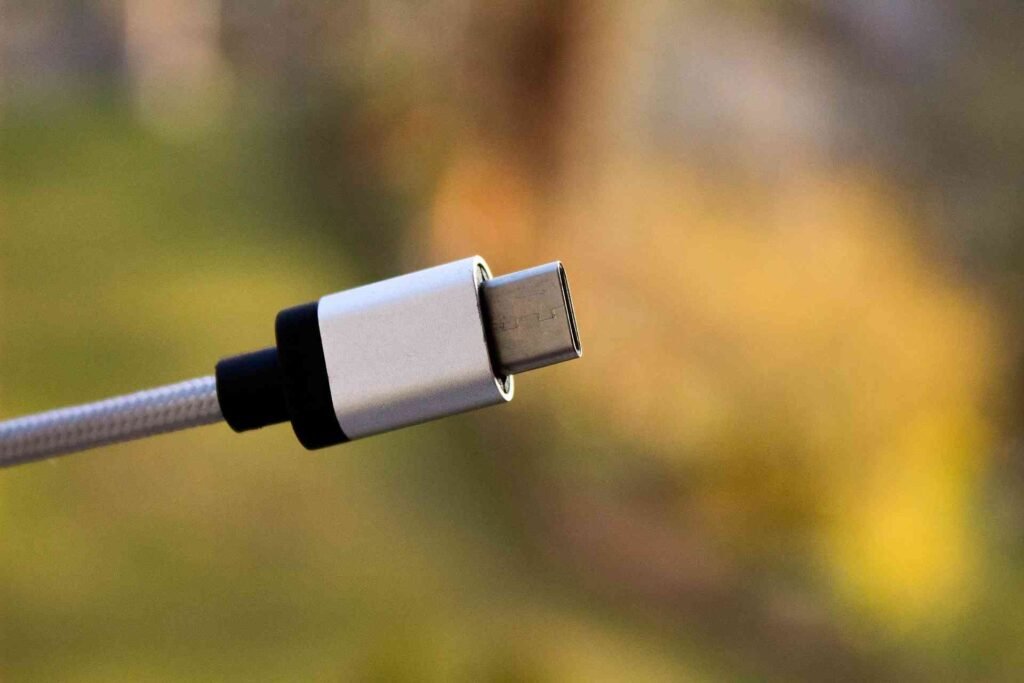
Identifying Your Ports: A Detective’s Guide
Since distinguishing between these ports can be tricky, here are some practical tips to help you identify what you’re working with:
Check the symbols: Look for tiny icons next to your ports. Mini DisplayPort typically has a rectangle with a line through it, while Thunderbolt features a lightning bolt symbol.
Software detection: On Mac computers, hold the Option key and click the Apple menu, then select “System Information.” Under Hardware, you’ll see detailed information about your ports. Windows users can check Device Manager or use system information tools.
Test functionality: Try connecting a known Thunderbolt device. If it works for data transfer, you have Thunderbolt. If it only works for display output, you likely have Mini DisplayPort.
Troubleshooting Connection Issues
When your display isn’t working properly, USB hub troubleshooting principles can sometimes apply to these connections as well. Here are some common issues and solutions:
No signal to display: Ensure you’re using the correct cable type and that your display supports the resolution you’re trying to output. Sometimes, device compatibility issues can arise when mixing different generations of technology.
Intermittent connection: Check for loose connections and ensure your cables aren’t damaged. Sometimes, the issue isn’t with the port type but with the cable quality or connection integrity.
Slow data transfer: If you’re expecting Thunderbolt speeds but getting slower performance, verify that all components in your chain support the full Thunderbolt standard.
FAQ
Can I use a Mini DisplayPort cable in a Thunderbolt port?
Yes, you can use a Mini DisplayPort cable in a Thunderbolt 1 or 2 port for display purposes. The Thunderbolt port will function as a Mini DisplayPort in this case, but you won’t get any of the additional Thunderbolt features like data transfer or power delivery.
Are Mini DisplayPort and Thunderbolt cables interchangeable?
For display purposes only, Mini DisplayPort and Thunderbolt 1/2 cables are interchangeable when connecting to compatible ports. However, if you need Thunderbolt-specific features like high-speed data transfer, you’ll need a proper Thunderbolt cable and compatible devices.
How can I tell if my device has Thunderbolt or Mini DisplayPort?
Check your device specifications, look for port symbols (lightning bolt for Thunderbolt, rectangle with line for Mini DisplayPort), or use system information tools to identify your ports. You can also test functionality by connecting different types of devices.
Is Thunderbolt always faster than Mini DisplayPort?
For display purposes, both standards can deliver similar video quality and resolution support. However, Thunderbolt offers much faster data transfer speeds and additional functionality that Mini DisplayPort simply doesn’t have.
Why did Apple switch from Mini DisplayPort to Thunderbolt?
Apple switched to Thunderbolt to provide users with more versatility and functionality. While Mini DisplayPort was excellent for displays, Thunderbolt offered the ability to connect multiple device types, transfer data at high speeds, and deliver power through a single port.
Making the Right Choice for Your Setup
When setting up your workspace, understanding these connection standards helps you make informed decisions about charging solutions and connectivity options. The choice between Mini DisplayPort and Thunderbolt ultimately depends on your specific needs and the devices you’re working with.
If you’re primarily connecting external displays and don’t need data transfer capabilities, Mini DisplayPort serves you well and often costs less. However, if you want future-proofing, versatility, and the ability to connect various device types, Thunderbolt is the more powerful choice.
Consider your workflow, the devices you plan to connect, and your budget when making this decision. Remember that technology evolves quickly, and what seems like overkill today might become essential tomorrow.
Looking for more? Check out our tech utilities category for more articles and guides that may interest you!
Featured image credit: Photo by Markus Winkler on Unsplash
This content is for informational purposes only. Please verify current information directly on the retailer’s site before purchasing.


